#elasmobranchs
Text
This school of scalloped hammerheads was not a sight we expected to see, but what a sight it was! Experts are actually unsure why scalloped hammerheads school, but some theorize they school this way as juveniles, and continue the behavior into young adulthood!
#hammerhead shark#scalloped hammerhead#sharks#chondrichthyes#elasmobranchs#marine biology#marine bio#marine biology studyblr#marine bio studyblr#biology#zoology#marine life#animals#scuba diving#marine conservation#ocean
1K notes
·
View notes
Text
It is once again shark week, my dudes
I'm going to try what I did last year again, so it's time for a new shark with shark facts for every day of Shark Week! Best week of the year :)

Today, it's LEMON SHARKS!
(Negaprion brevirostris)
Lemon sharks are really cool because they're recently learning a lot more about their social behavior! We don't often hear about sharks as social animals, but in the case of lemon sharks, group behavior is very common. Lemon sharks actively *prefer* to be social rather than being alone, see THIS cool behavioral experiment by Guttridge et. al. for more information. They often aggregate in groups based on being a similar size to the other sharks they choose to hang out with!
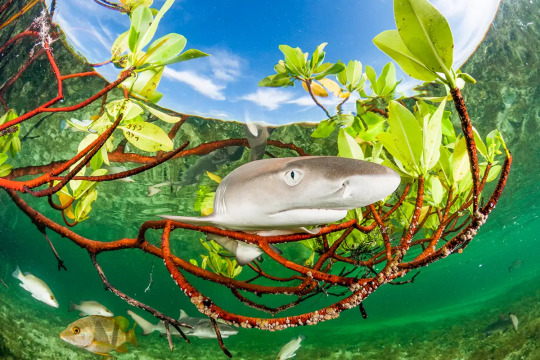
Baby lemon sharks are frequently found in nurseries in mangrove forests, the tall prop roots of mangrove trees provide shelter and protection for the shark pups as they learn how to, well, be a shark! These animals also return to the same nursery grounds year after year to reproduce, a behavior called natal philopatry! Many animals do this, these sharks are only one example.
#shark week#cal's shark week 2022#shark#elasmobranchs#marine biology#sharks#lemon sharks#cartilaginous fish#zoological
1K notes
·
View notes
Text


#eukarya#animalia#chordates#chondrichthyes#elasmobranchs#selachimorpha#hexanchiformes#hexanchidae#hexanchus griseus#h. griseus#cowshark#cow shark#shark#fish#bluntnose sixgill shark#shitpost#meme#marine biology
175 notes
·
View notes
Text


Atlantic torpedo | Torpedo nobiliana
X
55 notes
·
View notes
Text
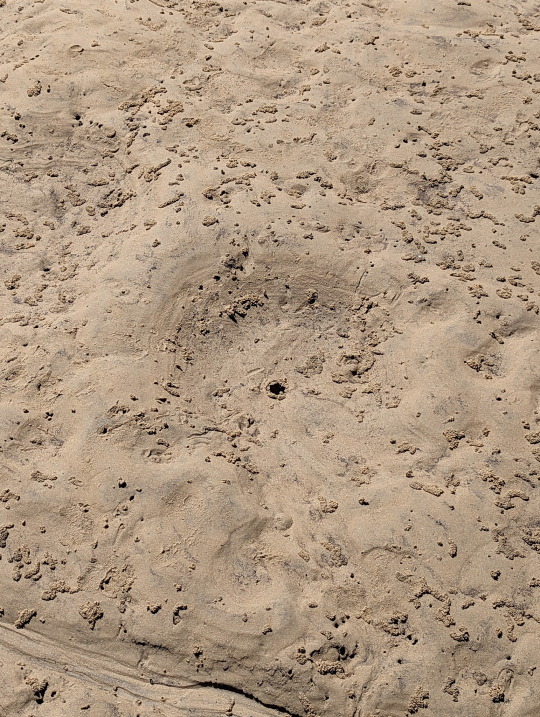



Stingray feeding pits (ignore the holes in the centre, that's from GPS equipment).
The stingrays would come to Leeke's Estuary at high tide to feed. To hunt any sediment-dwelling organisms, the stingrays would dig into the sand, displacing a large amount of sediment in the process. This left large distinct holes across the estuary's sediment.
This impacts the ecosystem in a few interesting ways, such as the recolonization of pits by various organisms (VanBlaricom 1982).
More information:
VanBlaricom GR 1982 ‘Experimental Analyses of Structural Regulation in a Marine Sand Community Exposed to Oceanic Swell’ Ecological monographs vol. 52 no. 3 pp. 295-302.
O’shea OR, Thums, M, Keulen, MV, Meekan, M 2012, ‘Bioturbation by stingrays at Ningaloo Reef, Western Australia’, Marine and freshwater research, vol. 63, no. 3, p. 195.
12/09/23 - Myliobatiformes sp.
QLD:CQC, Woppa (Great Keppel Island), Leeke's Estuary, coastal mangrove forest
#Myliobatiformes#Stingrays#Vertebrata#Vertebrates#Chordata#Chordates#Elasmobranchii#Elasmobranchs#rays#marine biology
18 notes
·
View notes
Text
can someone who knows a lot about sharks PLEASE explain the difference between order carchariniformes and order lamniformes. they seem so fucking similar to me and idk how to tell them apart
#sharks#marine biology#marine biology question#lamniformes#carchariniformes#fish#elasmobranchs#help#ask tumblr#SOMEONE HELP THEYRE SO SIMILAR IDK HOW TO CLASSIFY THINGS INTO EACH ONE. IM COIN TOSSING.
48 notes
·
View notes
Text
What’s an Arctic shark doing in the Caribbean? | News & Press | Mote Marine Laboratory & Aquarium
2 notes
·
View notes
Photo

39K notes
·
View notes
Text
Shark searenity 🦈😌
The sleek and spotted leopard shark swims stealthily through stalks of stupendously sunlit seaweed in search of a savory snack.
3K notes
·
View notes
Text
THREE NEW SHARK SPECIES THIS WEEK!
The second week of July 2023 something extraordinarily beautiful happened, the findings of 3 new species of sharks for were announced
A new angel sharks species was identified, from the western Indian Ocean on the Mascarene Plateau and off southwestern India in 100–500 m depths, the Lea’s angel shark Squatina leae, was recognized to be different genetically and morphologically distinct from its congeneric species Squatina africanae, following unique morphological features. This species was first detected in 1988 after finding three unusual, small sharks, but till today was completely understood. The angel shark is named after one of the author’s fiancee’s late sister, Lea-Marie Cordt.

- Squatina leae, adult male, in dorsolateral.
Angel sharks are “flatter sharks”, possesing distinctly broad, dorsoventrally flattened bodies, a short snout with large mouth and nostrils, eyes on top of the head close to the large spiracles, very large pectoral fins, and a lateral caudal keel. They've evolved to be ambush predators, they lie in wait for prey to pass closely overhead before attacking.
Reference (Open Access): Weigmann et al., 2023. Revision of the Western Indian Ocean Angel Sharks, Genus Squatina (Squatiniformes, Squatinidae), with Description of a New Species and Redescription of the African Angel Shark Squatina africana Regan, 1908. Biology
From North Australia, another species of hornshark is described based on six whole specimens and a single egg case. The painted hornshark Heterodontus marshallae was previously considered to be the same with the zebra bullhead shark another well know bullhead shark from the central Indo-Pacific from Japan to Australia, but genetic and morphological analyses indicated the sharks were different, but looking alike. The painted hornshark is endemic to northwestern Australia and occurs in deeper waters, at 125–229 m below surface.

- Lateral view of two mature female painted hornshark Heterodontus marshallae showing small differences between individuals
The painted hornsharks is named in honour of Dr. Lindsay Marshall www.stickfigurefish.com.au a scientific illustrator and elasmobranch scientist who expertly painted all the sharks and rays of the world for the Chondrichthyan Tree of Life Project.
Reference (Open Access): White et al., 2023 Species in Disguise: A New Species of Hornshark from Northern Australia (Heterodontiformes: Heterodontidae). Diversity.
And from an unidentified shark egg collected from the deep waters of northwestern Australia, in 2011 recently helped researchers identify a new species of deep water cat shark. Called ridged-egg catshark Apristurus ovicorrugatus after its eggs, it was collected in the earlys 90 but remained unknown to date. This sharks presents white eyes, and is small in size, reaching less than a half meter in length. .
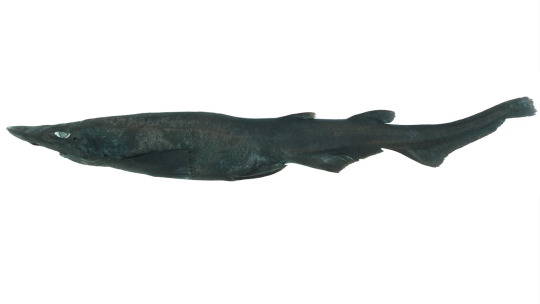
- Lateral view of female Apristurus ovicorrugatus before preserved. Photo by CSIRO.
Egg cases belonging to this species had been documented as early as the 1980s, but could not be matched to any species of Australian shark until recently scientists examined a shark specimen of previously uncertain identity in the CSIRO collection.

-egg cases of Apristurus ovicorrugatus. Scale bar is 10 mm
Reference (Open Access) White,et al., 2023 What came first, the shark or the egg? Discovery of a new species of deepwater shark by investigation of egg case morphology. Journal of Fish Biology.
#Squatina leae#Squatina#new species#elasmobranch#shark#biology#marine biology#science#marine science#indian ocean#bioblr#sciblr#sci#painted hornshark#Heterodontus marshallae#Heterodontus#Apristurus ovicorrugatus#Apristurus#long post#Ridged-egg catshark#Lea’s angel shark
3K notes
·
View notes
Text
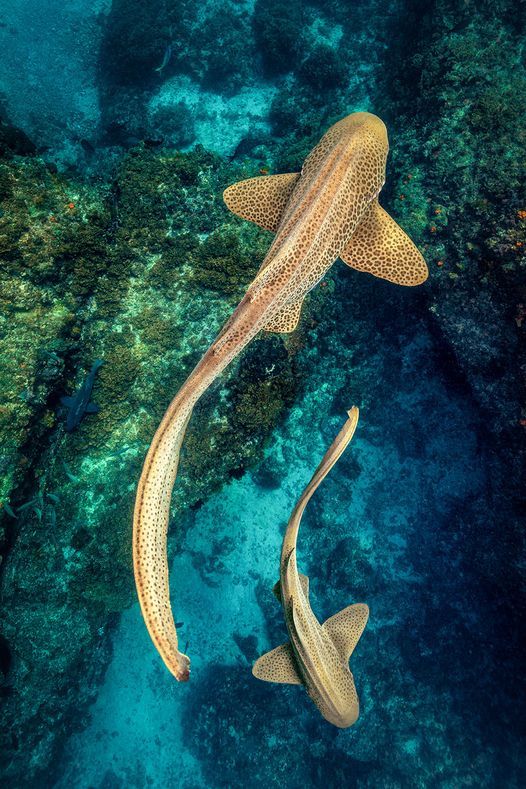
Zebra Shark (Stegostoma tigrinum), family Stegostomatidae, Byron Bay, NSW, Australia
ENDANGERED.
This shark gets its name from the appearance of the juveniles, which are striped.
In parts of its range, it is sometimes called the Leopard Shark. There is, however, another shark referred to commonly as the Leopard Shark. Triakis semifasciata, a kind of houndshark, that lives along the Pacific Coast of North America from Oregon to Mexico.
photograph by Jordan Robins Photography
783 notes
·
View notes
Text
Oceanic manta rays are the largest species of ray in the world, with a wingspan of up to 26 feet. Despite their immense size, they are completely harmless to divers - they have no barbs to speak of, unlike stingrays, and spend their time filtering the water for plankton with the help of their cephalic lobes (the big paddles on each side of their mouths). Socorran mantas have grown very used to divers, and often seek out our bubble curtains seemingly because they feel good and may help clear away parasites!
#manta#mobula birostris#endangered#dive footage#scuba#marine biology#marine bio#marine biology studyblr#marine bio studyblr#biology#zoology#marine life#animals#sea life#elasmobranchs#chondrichthyes#manta ray#socorro#mexico#cute animals
284 notes
·
View notes
Text

Lessiniabatis aenigmatica was a rather strange stingray.
It lived around 50-48 million years ago during the early Eocene, in a shallow warm sea covering what is now Italy, with its three known fossil specimens all coming from the fish-rich Monte Bolca fossil beds.
About 60cm long (~2'), it had a round pancake-like body similar to many modern seafloor-dwelling stingrays – but uniquely it was also almost tailless, with only a tiny, slender, stingless tail.
It wasn't a particularly strong swimmer, instead probably spending most of its time buried in the muddy seafloor sediment. When on the move it likely swam along just above the surface of the seafloor using undulations of its fins, foraging for smaller bottom-dwelling animals like worms, molluscs, crustaceans, and fish.
—
NixIllustration.com | Tumblr | Patreon
#science illustration#paleontology#paleoart#palaeoblr#lessiniabatis#dasyatoidea#myliobatiformes#stingray#batoidea#ray#elasmobranch#chondrichthyes#cartilaginous fish#fish#art#sea pancake
486 notes
·
View notes
Text
Blackmouth Catshark (Galeus melastomus)

#eukarya#animalia#chordates#chondrichthyes#elasmobranchs#selachimorpha#carcharhiniformes#scyliorhinidae#galeus melastomus#g. melastomus#blackmouth catshark#sharks#fish#marine biology
149 notes
·
View notes
Text

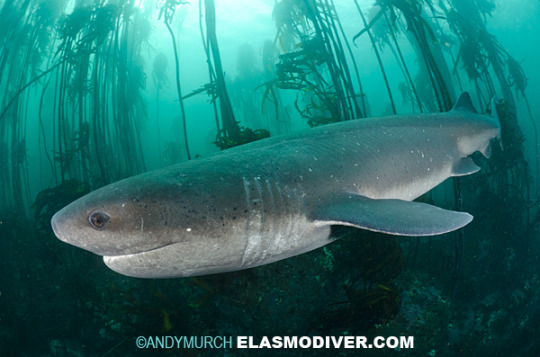
Broadnose sevengill shark | Notorynchus cepedianus
X
185 notes
·
View notes
Text
🦈 Daily Shark Fact: 🦈
The origin of a Nurse Shark's name is not what you think. Unbelievably, it has nothing to do with hospital staff or bedside manner. There are two prevailing hypotheses explaining where the name ‘nurse’ shark came from. The first is that they get their name from the sucking motion they make with their jaws when they feed, which resembles a baby nursing. The second is that the name actually comes from either the Old English word for sea-floor shark, ‘hurse,’ or the Middle English word ‘nusse’, which means cat shark.

#nurse shark#sharks#shark blog#shark#cartilaginous fish#elasmobranch#advocacy for sharks#respect the locals#save the sharks#shark awareness#shark lover#just a girl who loves sharks#shark post#shark facts#facts about sharks#daily shark facts#fyp#shark tumblr#sharks of tumblr#the more you know#i love sharks#sharks are important#sharks are cool#sharks dont infest oceans#sharks are friends
457 notes
·
View notes